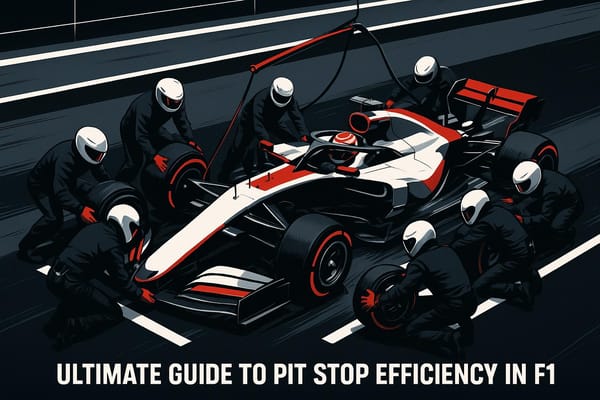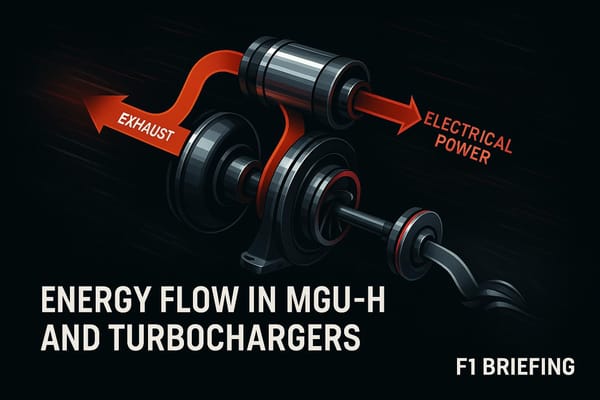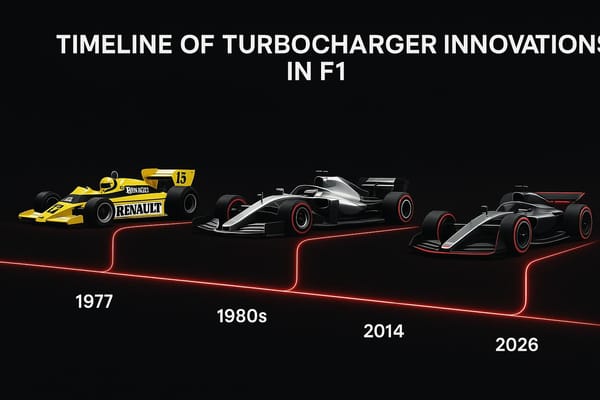How F1 Teams Optimize Cross-Department Workflows
Explore how Formula 1 teams enhance collaboration across departments, leveraging communication, shared goals, and advanced technology for peak performance.
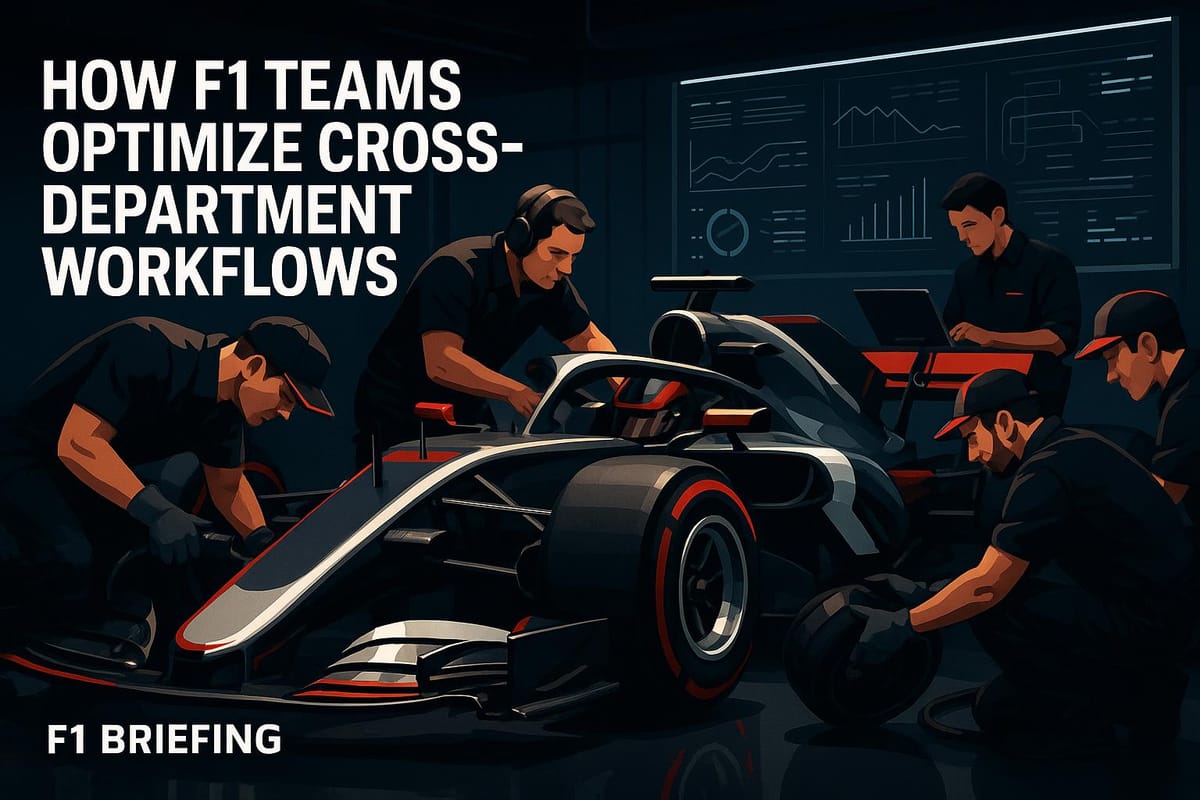
Formula 1 teams excel at collaboration because every department’s work directly impacts race performance. From designing car parts to executing pit stops, seamless teamwork is essential. Here’s how they do it:
- Clear communication: Teams use structured systems, real-time telemetry, and standardized protocols to share critical information quickly and accurately.
- Shared goals: Departments align their objectives, ensuring resources are allocated effectively and everyone works toward common targets.
- Accountability: Transparent data sharing and post-race reviews focus on collective improvement, not blame.
- Advanced tools: Real-time data platforms, AI simulations, and project management software help teams make faster, smarter decisions.
- Continuous improvement: Small, incremental changes are prioritized, ensuring steady progress without overhauls.
These strategies allow F1 teams to adapt under pressure, avoid inefficiencies, and maintain peak performance. The lessons? Strong communication, aligned goals, and smart use of technology can improve workflows in any industry.
How Do F1 Teams Design, Produce and Race an Upgrade?
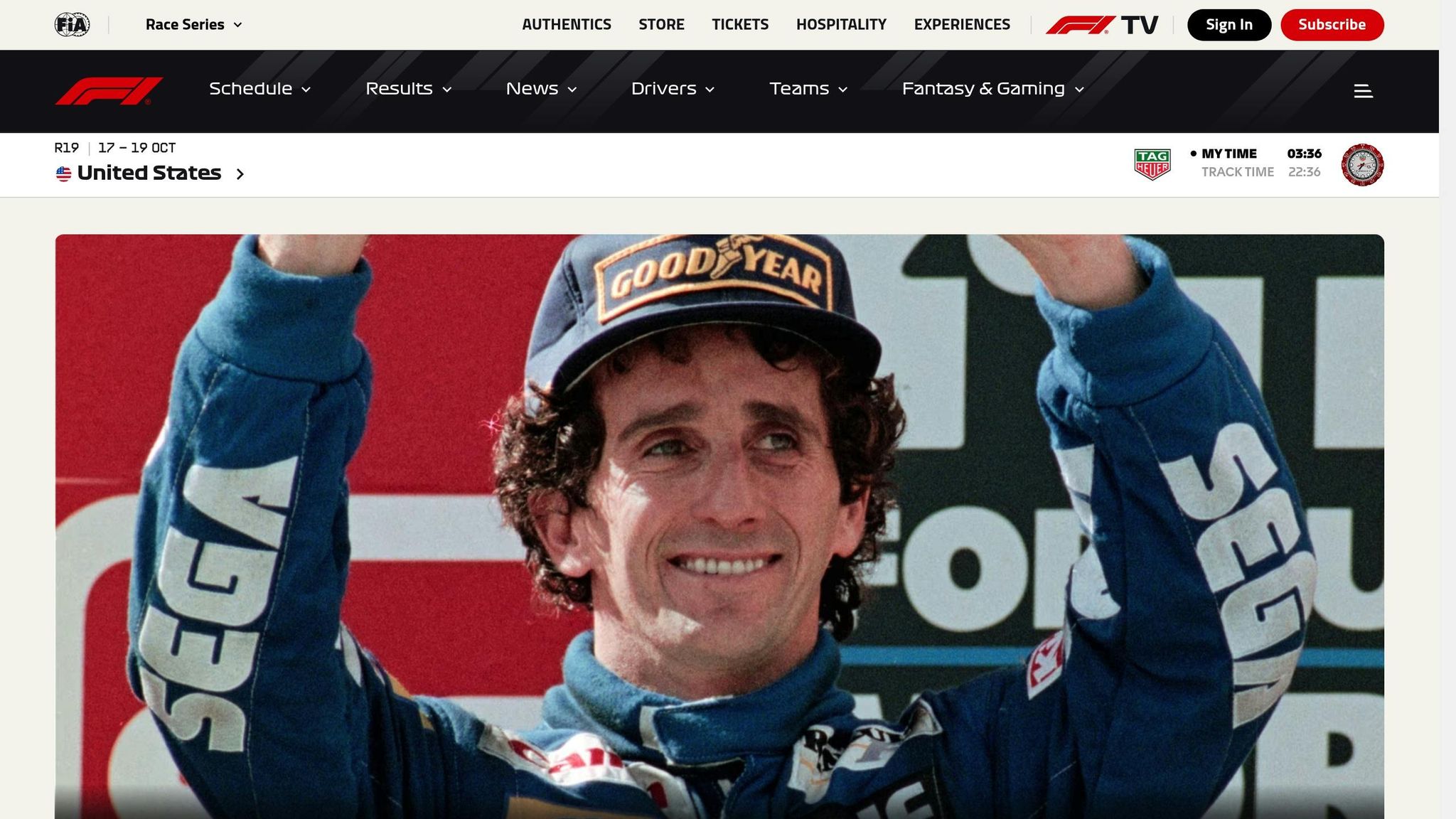
Core Strategies for Cross-Department Collaboration
Top-performing teams know that breaking down silos is essential for creating smooth workflows between departments. These strategies are the backbone of efficient operations, directly driving success and keeping performance on track.
Setting Up Clear Communication Channels
In the fast-paced world of F1 racing, clear and efficient communication is non-negotiable. Teams rely on structured systems to keep everyone informed and aligned. For instance, focused daily briefings ensure every department shares updates on progress, challenges, and resource needs. During race weekends, specialized radio channels connect trackside operations with factory-based support, while low-latency video links enable seamless communication during critical moments.
Real-time telemetry plays a pivotal role as well. Engineers can instantly relay crucial data to drivers, ensuring decisions are made without delay. To make all of this work, teams implement standardized protocols. These guidelines specify what information needs to be shared, when it should be communicated, and through which channels. This approach avoids information overload while ensuring the right people get the right data at the right time.
Creating Shared Goals and Objectives
Getting everyone on the same page starts with unified objectives that are clear and actionable across all departments. F1 teams excel at this by breaking down overarching goals into specific, department-level targets that are interconnected.
For example, a team’s primary goal might be to boost overall performance. Each department then translates this into measurable objectives: the aerodynamics team could work on increasing downforce, the powertrain group might focus on reducing weight, and the strategy team could refine tire management plans.
When departments share aligned goals, resource allocation becomes a collaborative effort rather than a competition. If aerodynamic improvements are deemed critical for an upcoming race, resources can be temporarily redirected to that area for maximum impact. Regular progress reviews help keep everyone aligned, allowing teams to share updates, resolve conflicts, and adjust strategies based on collective feedback.
Building Trust and Accountability
Once shared goals are in place, fostering trust and accountability becomes the next step. Trust is built through transparency and clear accountability structures, ensuring everyone follows through on their commitments.
Openly sharing data, findings, and even setbacks creates an environment where teams can tackle problems collaboratively instead of working in isolation. Joint problem-solving sessions not only improve outcomes but also strengthen relationships between departments.
Accountability in F1 teams is about collective responsibility rather than pointing fingers. Post-race reviews focus on the entire workflow instead of singling out one department. This encourages honest reporting of issues and creates a culture where team members feel comfortable admitting mistakes or asking for help.
Cross-department mentoring programs further enhance collaboration by building personal connections that translate into professional respect. Celebrating team achievements through recognition systems reinforces the value of working together and motivates continuous improvement.
These strategies lay the groundwork for leveraging technology more effectively, ensuring every department works as part of a cohesive unit.
Using Technology to Improve Workflows
Modern Formula 1 teams rely heavily on advanced technology to streamline operations and ensure smooth collaboration across departments. These tools revolutionize how teams gather, interpret, and act on data, forming the backbone of their real-time decision-making processes - an essential extension of their communication strategies.
Real-Time Data Analysis and Sharing
During every session, F1 teams generate massive amounts of telemetry data. This information is continuously transmitted to both trackside and factory teams, where cloud computing systems process it instantly. For instance, if a driver reports handling issues, the aerodynamics team can immediately dive into suspension data, while the strategy team examines tire performance, and the pit crew prepares for potential setup changes.
Interactive dashboards simplify this complex data into clear metrics like tire temperatures and fuel usage, enabling team members from various specialties to stay aligned. Engineers working remotely at the factory also receive live updates during practice sessions, allowing them to provide immediate feedback to trackside operations. This real-time collaboration ensures that every department can act swiftly and cohesively.
Project Management and Workflow Tools
Advanced project management tools play a crucial role in synchronizing team efforts. These platforms track everything from aerodynamic upgrades and engine tweaks to logistics and race preparation. Task management systems prioritize work based on performance impact and available resources, using automated scheduling to optimize timelines. Additionally, digital approval systems streamline decision-making by routing proposals to the right stakeholders, ensuring accountability and maintaining clear records of decisions. This systematic approach keeps all departments aligned and efficient.
Simulation and Predictive Modeling
AI-powered simulations and predictive analytics transform raw data into actionable strategies, giving teams a competitive edge. These tools allow departments to anticipate future conditions, predict competitors' moves, and make confident decisions. For example, strategy teams use AI models that analyze years of race data, track-specific factors, and current conditions to forecast race scenarios. This helps them identify the best pit windows, fuel strategies, and even predict the likelihood of safety car deployments. Such insights enable teams to prepare contingency plans while keeping everyone - from engineers to pit crews - ready for any situation.
AI also plays a pivotal role in pit stop strategies. Algorithms process real-time data like track traffic, competitor speeds, tire wear, and lap times to minimize pit lane delays while maximizing tire performance. These tools allow teams to adapt race strategies on the fly and refine designs with incredible speed.
The reintroduction of ground effect aerodynamics has further underscored the importance of these technologies. AI-driven models help teams fine-tune designs to achieve the ideal balance between ride height and downforce, often requiring thousands of iterations to find the optimal solution. By integrating predictive tools into their workflows, F1 teams enhance coordination across departments, building on their robust communication and management systems.
Continuous Improvement in F1 Team Operations
In the high-pressure world of Formula 1, staying ahead means constantly refining how things get done. Teams are always looking for ways to make their operations smoother, faster, and more effective. Even the smallest tweaks can lead to noticeable advantages on race day. With strong communication systems and cutting-edge data analysis, this constant pursuit of improvement forms the backbone of their success.
Post-Race Analysis and Feedback Loops
Every race weekend produces an enormous amount of data - far more than just lap times and tire choices. Teams dive into detailed debriefs shortly after the race ends, scrutinizing everything from technical performance to how well the various departments worked together during critical moments. These sessions involve engineers and other key staff reviewing telemetry data alongside firsthand feedback.
For example, they might assess whether the aerodynamics team got suspension data in time or if the strategy team’s decisions were clearly communicated to the pit crew. They also analyze how quickly decisions were made during unexpected situations, like sudden weather changes or safety car deployments. Identifying these bottlenecks helps them fine-tune communication and decision-making for future races. This thorough review process becomes the foundation for targeted improvements in the weeks ahead.
Making Small, Gradual Changes
F1 teams have embraced a strategy of continuous, incremental upgrades. Recent regulations, such as cost caps and stricter testing limits, have pushed teams to focus on small, manageable changes rather than sweeping overhauls. Instead of completely revamping systems or restructuring departments, teams make precise adjustments that add up over time. While a single change might seem minor, the cumulative impact across a season can be game-changing.
For instance, upgrades are introduced as soon as they’re ready, allowing teams to benefit from performance gains earlier. Thousands of these small modifications are made throughout a season, enabling teams to adapt to evolving conditions. Research has shown that this steady, step-by-step approach often yields better results than dramatic overhauls, making it a more reliable path to success.
How Innovation Improves Workflow Optimization
Building on these incremental changes, F1 teams use focused innovations to fine-tune their workflows. By analyzing performance data and experimenting with adjustments, they identify areas where even slight improvements can make a difference. This approach ensures that any advancement - no matter how small - is quickly integrated into daily operations. These constant refinements keep teams sharp and competitive in a sport where every second counts.
Case Studies: Success Stories from Formula One Teams
Real-world examples show how teamwork across departments can elevate race performance and sharpen strategic choices. Let’s dive into a couple of standout instances.
How a Team Sharpened Pit Stop Performance with Teamwork
One Formula One team took its pit stop game to the next level by breaking down silos between engineers and pit crews. Traditionally, these groups worked separately, but the team decided to change that. They brought pit crew members into the tool design process, ensuring the equipment was tailored to their needs. On top of that, they introduced real-time communication protocols during races. The result? Smoother, faster pit stops that directly boosted race-day performance.
Using Unified Data to Strengthen Race Strategy
Another team transformed its race strategy by streamlining how data was shared and analyzed. They created a single platform to bring together information from different areas, like strategy, aerodynamics, and engine performance. By sharing real-time data across departments, they could adjust quickly to shifting race conditions. This approach allowed them to make decisions that factored in everything from aerodynamic efficiency to fuel use and tire wear. The result was not only better on-the-spot choices but also smarter long-term planning.
Conclusion: Lessons from F1 Workflow Optimization
F1 teams demonstrate an extraordinary ability to collaborate across departments under intense pressure, offering valuable insights for improving organizational efficiency in any field.
Key Takeaways on Cross-Department Optimization
The most accomplished F1 teams operate on a few fundamental principles that streamline their workflows. Clear communication, shared objectives, and integrated technology form the backbone of their success. Engineers, strategists, and pit crews exchange information instantly, ensuring decisions are made quickly and with the right context. Each team member understands how their role contributes to the bigger picture, creating a unified effort.
Technology plays a pivotal role, but it’s most effective when tailored to fit the way teams naturally work together. Tools like real-time data platforms, predictive models, and simulation software are designed to enhance - not hinder - collaboration.
What truly sets F1 apart is its relentless focus on improvement. Post-race analyses don’t just highlight mistakes; they uncover tiny adjustments that lead to meaningful progress over time. This dedication to refinement applies equally to workflows as it does to car performance.
These guiding principles not only fuel F1 success but also offer lessons that can be adapted to improve efficiency and collaboration in other industries.
How Other Industries Can Apply F1 Workflow Principles
From healthcare to manufacturing, organizations can draw inspiration from F1’s approach to communication and technology integration. The challenge lies in tailoring F1’s precision and speed to your industry’s unique needs. Start by establishing open communication channels that allow departments to share information effortlessly. Develop shared metrics that everyone understands and values. Finally, invest in tools that encourage teamwork rather than isolating teams into silos.
The formula is straightforward: seamless collaboration across departments leads to better outcomes. While the principles may seem simple, the real difference comes from a consistent and disciplined commitment to putting them into practice.
FAQs
How do F1 teams maintain smooth communication across departments during intense race weekends?
F1 teams thrive under pressure by combining cutting-edge technology, detailed planning, and efficient communication. One of the most crucial elements is the radio communication between drivers and the pit wall. These messages are crafted to be direct and easy to understand, ensuring critical information is relayed without confusion.
To stay ahead during a race, teams rely on advanced data-sharing systems that track real-time performance. This constant flow of information allows them to adjust strategies instantly, responding to any developments on the track.
Pre-race briefings are another vital component, bringing all departments together to ensure everyone is on the same page. Each team member knows their role and the overarching plan. Once the race begins, electronic tools and continuous updates keep the collaboration smooth, enabling quick and informed decisions in an environment where every second counts.
How do F1 teams use technology to improve collaboration and make better decisions?
F1 teams depend heavily on advanced technology to improve teamwork and make smarter decisions during races. Each car is packed with hundreds of sensors that gather real-time data. This data is analyzed on the spot to fine-tune strategies around tire usage, pit stops, and overall race tactics.
With tools like AI-powered analytics and cloud-based platforms, engineering and strategy teams can collaborate effortlessly. These technologies help teams share insights and make quick, well-informed choices. This seamless integration is what allows F1 teams to adapt swiftly and stay competitive in the high-speed, high-stakes environment of Formula One.
How can businesses use Formula 1-inspired strategies to improve teamwork and workflows?
Businesses can learn a lot from Formula 1 by emphasizing shared goals, promoting a mindset of constant improvement, and embracing data-driven decision-making. When teams have clear objectives, everyone can align their efforts toward a unified purpose. Encouraging incremental, ongoing improvements not only sparks innovation but also helps teams stay flexible in changing environments. Meanwhile, leveraging data to evaluate performance allows for more informed and effective decisions. Together, these strategies can strengthen teamwork, improve efficiency, and pave the way for success in any industry.

